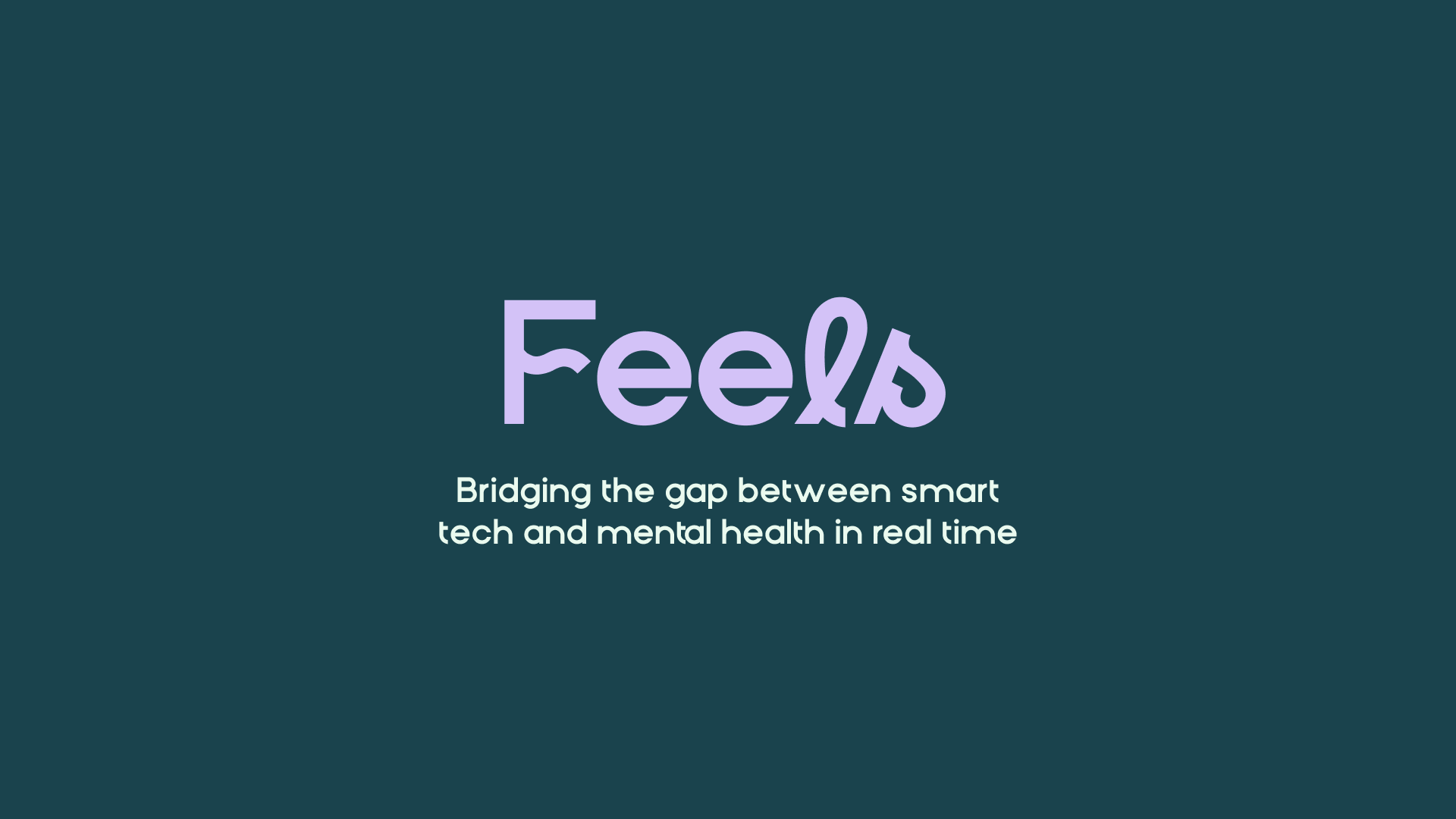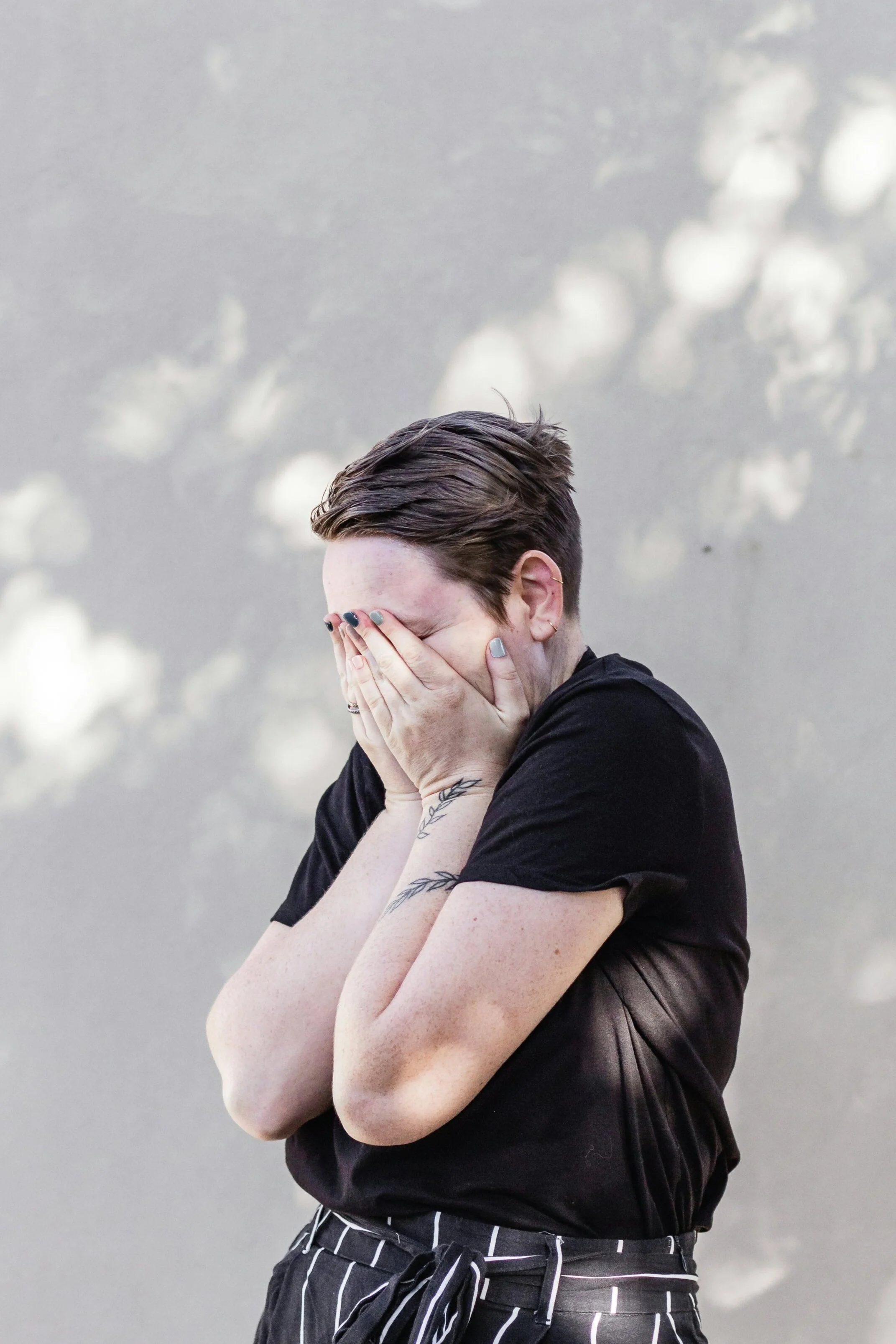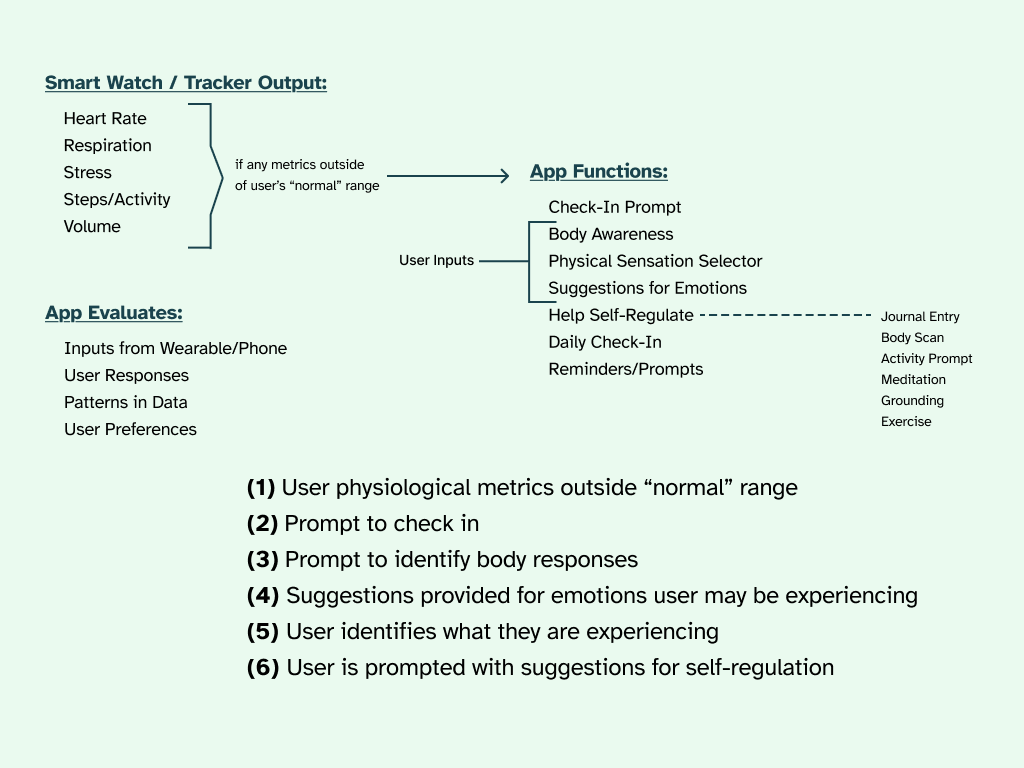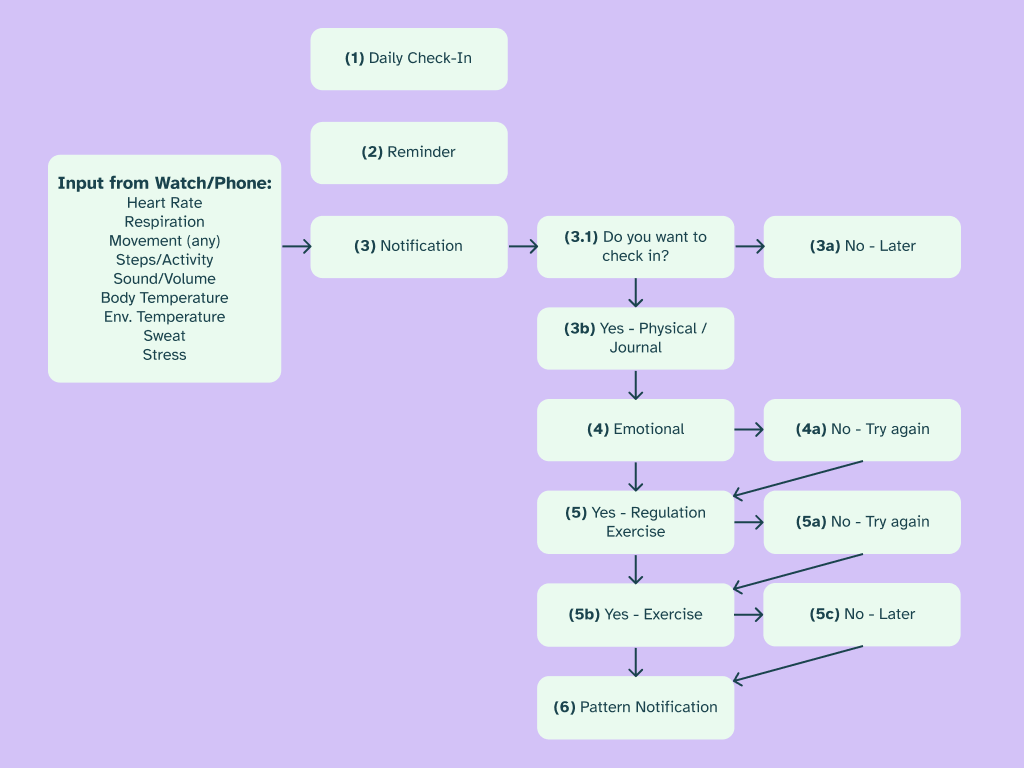What’s the problem?
From a combination of my own personal experiences, observing loved ones, and professional experiences working in mental health, I realized that all the apps that exist to help with emotional wellness, meditation, improving habits, and so on (and there are a lot of apps designed to do those things) aren’t doing much good if the people who need the most help aren’t actually reaching for those apps. The problem is that there is no external “trigger,” the only driving force is the user.
The challenge was to conceptualize an app to track an element of user wellness habits they wish to grow or adjust. I just got lucky that there was already a subject I really care about, which is how Feels was born.
My Role: Well, everything. This is a design challenge that I ran with.
Project Scope: Concept, Research, Interaction Design, Visual Design, Wireframing, Prototyping
How It’s Made: Figma, FigJam
Usable by all, but designed specifically for neurodivergent people who are more likely to struggle with alexithymia, poor interoception, and demand avoidance, Feels was dreamt up to help users bridge the gap between the information their devices are already recording and their mental health — leveraging and analyzing existing data in order to improve emotional awareness and wellbeing.
Neurodivergent refers to those whose brains process information/learn/behave in ways that differ from what is considered typical or neurotypical. This most commonly includes ADHD, autism (ASD), dyslexia/dyscalculia, and dyspraxia. These conditions can be disabling.
Alexithymia, literally translated as ‘no words for emotions’ and also called emotional blindness or emotional color blindness, is a neuropsychological phenomenon characterized by significant challenges in recognizing, expressing, and describing one's own emotions.
Interoception is the sense that helps you understand and feel what is going on in your body e.g. noticing if you are hungry, thirsty, too hot/cold, need to go to the bathroom, etc.
PDA (Pathological Demand Avoidance or Persistent Drive for Autonomy, depending on who you ask), most commonly associated with autism and ADHD, is a behavioral profile that describes someone's extreme resistance to demands or expectations.
20%
Prevalence of neurodivergence in the global population, about 1 in 5 people
“When you design for the margins, you get the middle for free”
Research
Twelve people participated in 1:1 interviews on a volunteer basis, sourced via social media. A conscious effort was made to interview people across various demographics, primarily age and gender.
The goal for these interviews was two-fold: to gain an understanding of user behaviors surrounding mental health and how they navigate difficulties like stress or disappointment, and to understand user feelings regarding wearable fitness trackers.
“I would really like to know that information about myself because maybe there are patterns there that I’m just not noticing.”
“Identifying my own emotions is difficult, there are times that other people notice that I’m not my “normal self” before I do. Other times I notice that my reactions to a situation are not proportionate to the situation.”
“I really want this app to be real even though it would annoy the f*ck out of me.”
“For the first two years of therapy, I just said anxious for how I’m feeling. I’m not great at identifying actual feelings, only my physical response to them.”
Findings & Supporting Data
(1) Experience with wearable fitness trackers/smart watches
Challenge: They aren’t necessarily wearing them regularly or using them to their max potential
Opportunity: A good mix between types of phones and trackers
21%
U.S. adults who say they regularly wear a smart watch or fitness tracker, about 1 in 5 people.
(2) Negative feelings towards mental health assistant apps and/or negative feelings towards wearable trackers
Challenge: Smart watches/fitness trackers can trigger or maybe even cause some disordered eating/exercise habits
Challenge: Some users associate wearable devices exclusively with fitness/calories and something that is only for athletes
Opportunity: Ability to use the app without a wearable tracker
30% / 25%
The prevalence of exercise addiction in the population who had an indicated eating disorder, compared to those without indicated E.D.
(3) Awareness of concepts like interoception, alexithymia, and demand avoidance — even if they didn’t know the correct term — and self-identified interviewees shared that they do struggle with these things
Personas
Frankie is in their late 20’s and has both ADHD and OCD. They work full time and also attend night classes, a lot of stress for somebody who already has high anxiety. Sometimes they don’t realize how hard they’ve been working until they are on the brink of a meltdown.
Sarah is in her late 30’s and autistic. She mostly works remotely, but has to go into the office a few days each week. It can takes her a while to realize that the hum of the electricity, the overhead lights, and the constant distractions are pushing her towards sensory overload.
Mind Map
This mind map was developed based on a combination of findings from 1:1 interviews, competitive and comparative analysis, and design principles.
App Concept & User Flow
Building on research findings, the concept of the app was adjusted and laid out to show the overall process as well as a user flow for how the app might work.
Connect to Device
Daily Check In
Reminder
Alert Check In
Regulation Exercise
Pattern Recognition
Features & Constraints
Considering the challenges and opportunities from participant interviews and building on the concept, a feature list was developed with constraints to keep in mind and questions to further explore.
Current Features
Can read data from smartwatch/fitness trackers and phones
Daily check-in prompt for emotional well-being (optional after initial learning period)
Reminders/notifications set by user e.g. to eat lunch or go to the bathroom (optional)
Data analysis in real-time
Notification if user metrics are outside of their normal range ("alert mode")
"Select all that apply" what user is noticing about their own body
Emotion explanations/definitions
Self-regulation suggestions e.g. physical activity or mental exercise
Walk user through body scan / meditation / grounding technique
Both user and device can learn from this for future events
Constraints
Should work with existing fitness tracker; no special equipment or purchase needed.
Ways to work without a wearable device
What data can phones collect? Movement, noise, temperature, etc.?
With a mind map, concept, user flow, and features list in order, the first sketches of individual screens were brought to life:














Visual Design
Decision-making for user interface design should always include considerations for usability heuristics and accessibility, but this is particularly important for an app that is primarily geared towards neurodivergent folks, who are often also part of the disability community.
Some decisions made for the visual design of Feels include:
Color palette evaluated for contrast per accessibility guidelines
16pt minimum font size for body copy
Clear and bright changes for button interactions, two different effects: glowing border and inverse colors
Two different ways to show something is selected is important in case a user is unable to see one of them
Consistency in language/wording









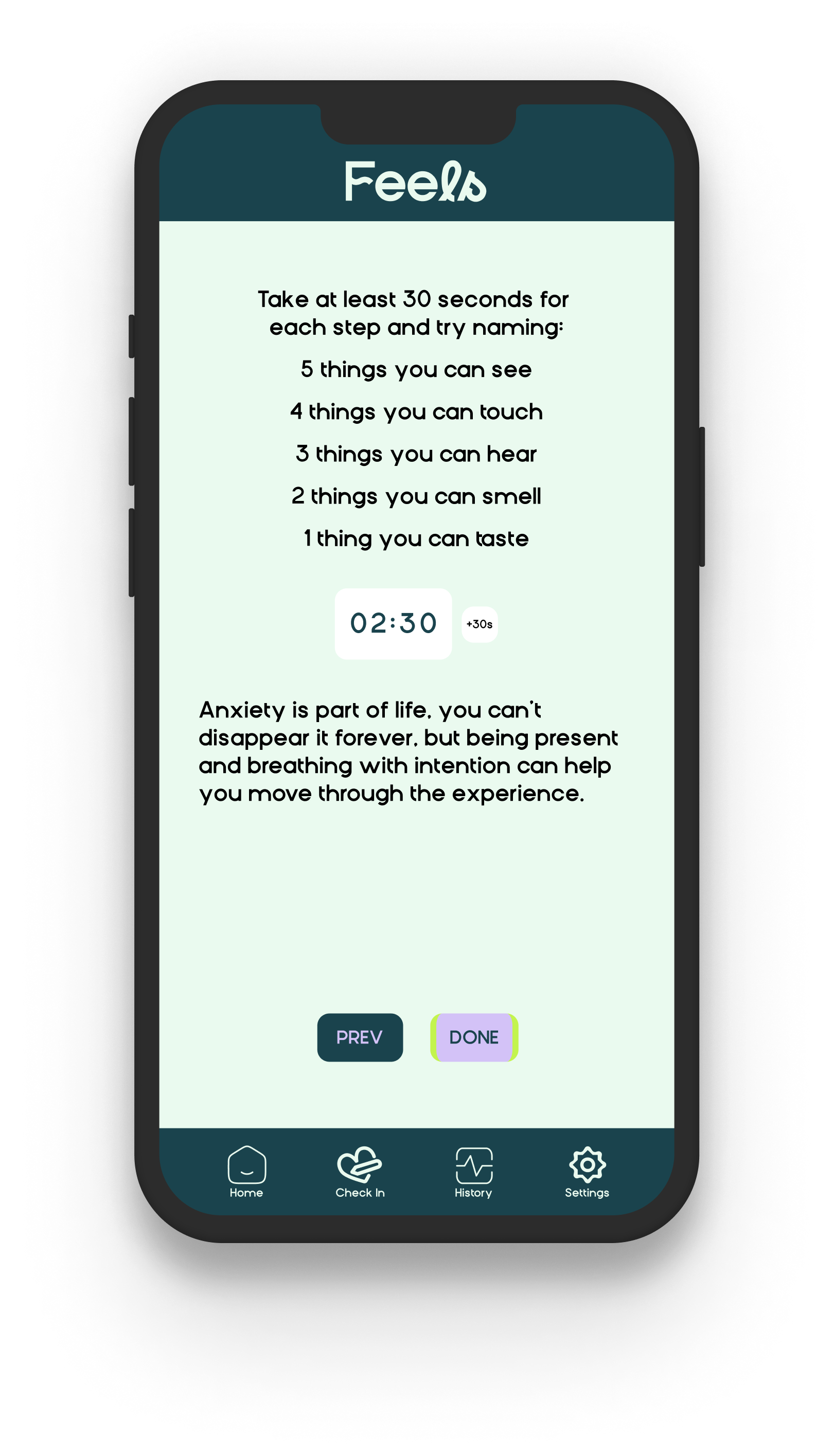

What started as a design challenge turned into a serious passion project with interview participants asking if this is a real thing that can exist.
Looking back on what I learned through the process, I’m so proud of this concept and the interactive prototype I was able to bring to life. I also know there is plenty more work to be done if I ever did want to make this real.
Next steps:
I’ve learned so much about user research since I first did my early concept interviews, so additional 1:1 interviews to improve the concept and a usability study to analyze functionality and inform the user flow.
As I continue to improve my design skills and my knowledge of accessibility, a more rigorous visual design evaluation for adherence to accessibility best practices and usability heuristics.
Based on research insights, evaluate features list for gaps and redundancies.
Develop MVP


